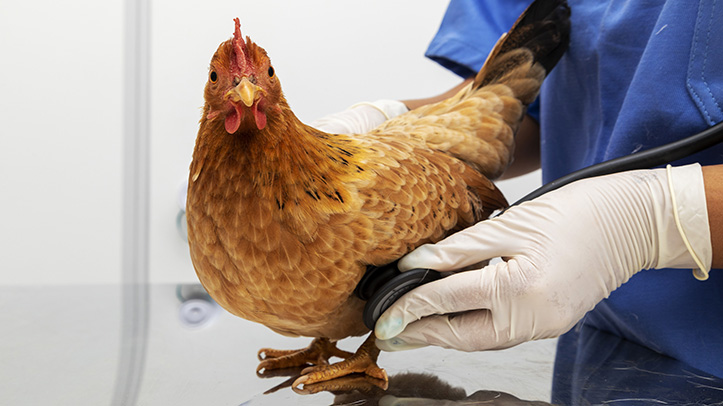A new pioneering poultry guide has just been launched following a collaboration between a UK hen rehoming charity and a US-based organisation.
The British Hen Welfare Trust (BHWT) and PoultryDVM have created the Poultry Vet Guide, which will enable vets to easily check symptoms of poorly poultry, diagnose them and provide treatment options.
There is a small annual subscription fee to access the information; however, costs have been purposely kept low as the primary aim is to improve veterinary support for poultry across the globe.
Kelly Rutkowski from PoultryDVM first began working on the guide several years ago as part of a Master of Business degree with help from veterinary professionals and textbooks. Unbeknown to her, across the Atlantic the BHWT had a vision to create a similar UK-based guide.
When the BHWT became aware of Ms Rutkowski’s project, a collaboration quickly followed with both parties keen to help as many birds as possible by creating an affordable resource for vets.
The guide has been produced by the BHWT and Poultry DVM with extensive input from poultry experts Sharon Evans BSc (Hons), BVSc, MRCVS and Rebecca Gounaris DVM.
Ms Rutkowski said: “The reason I focussed on poultry was because I felt like there was a huge gap in the advice and knowledge that’s out there.
“There is a growing population of people keeping pet chickens, but a lack of resources to take care of them, which is why I saw the need for the site.”
As well as saving 50,000 commercial laying hens from slaughter every year, the BHWT is committed to improving pet hen health. The charity hopes that this guide will act as a much-needed diagnostics and treatment options facility for vets to use as a reference point in practice on a daily basis.
Jane Howorth MBE, founder of the BHWT, said: “This online guide is the result of a wonderful team effort, including vets with years of poultry experience, resulting in an outcome that will support veterinary professionals by making it easier to treat pet poultry.
“Spreading knowledge is the key priority to better equip vets everywhere to diagnose and treat the growing numbers of pet poultry, which is why we’ve made this information as affordable and accessible as possible. I’d like to encourage vets to sign up to access the guide, I have no doubt it will become an invaluable tool when faced with a poorly bird.”


